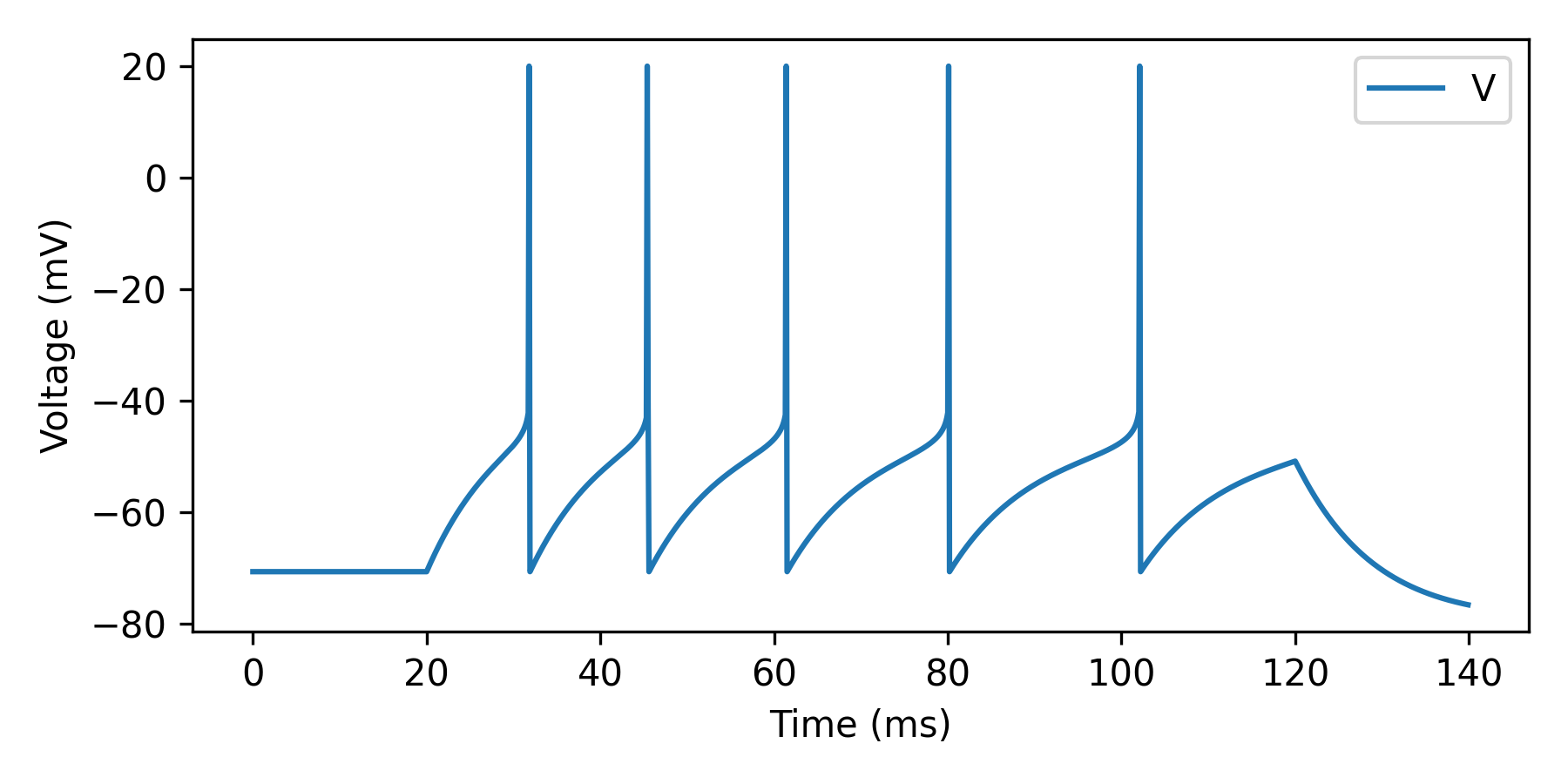AdEx neuron#
The Dendrify implementation of the Adaptive exponential integrate-and-fire model (adapted from Brian’s examples).
Resources:
import brian2 as b
from brian2.units import ms, mV, nA, nS, pF
from dendrify import PointNeuronModel
b.prefs.codegen.target = 'numpy' # faster for simple simulations
# Create neuron model
model = PointNeuronModel(model='adex',
cm_abs=281*pF,
gl_abs=30*nS,
v_rest=-70.6*mV)
# Include adex parameters
model.add_params({'Vth': -50.4*mV,
'DeltaT': 2*mV,
'tauw': 144*ms,
'a': 4*nS,
'b': 0.0805*nA,
'Vr': -70.6*mV})
# Create a NeuronGroup
neuron = model.make_neurongroup(N=1, threshold='V>Vth+5*DeltaT',
reset='V=Vr; w+=b',
method='euler')
# Record voltages and spike times
trace = b.StateMonitor(neuron, 'V', record=True)
spikes = b.SpikeMonitor(neuron)
# Run simulation
b.run(20 * ms)
neuron.I_ext = 1*nA
b.run(100 * ms)
neuron.I_ext = 0*nA
b.run(20 * ms)
# Trick to draw nicer spikes in I&F models
vm = trace[0].V[:]
for t in spikes.t:
i = int(t / b.defaultclock.dt)
vm[i] = 20*mV
# Plot results
b.figure(figsize=[6, 3])
b.plot(trace.t / ms, vm / mV, label='V')
b.xlabel('Time (ms)')
b.ylabel('Voltage (mV)')
b.legend()
b.tight_layout()
b.show()
